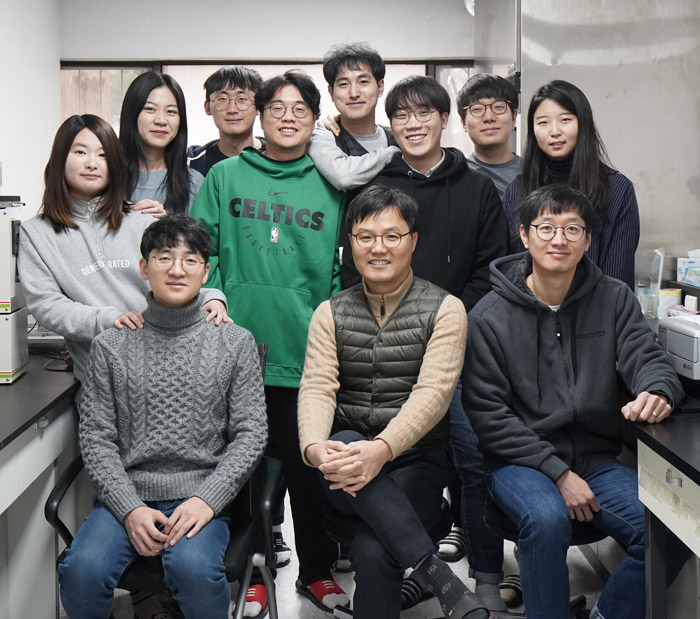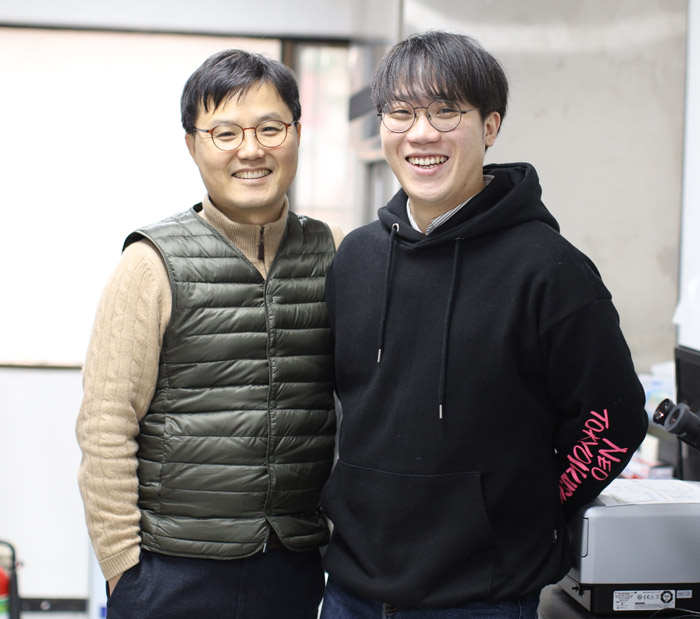Research Stories
Successful Development of 3D muscle-mimetic cell-laden nanofiber via cell-electrospinning
Anisotropically arranged nanofibers enhancing muscle regeneration
Bio-Mechatronic Engineering
Prof.
KIM, GEUNHYUNG
Prof. Geun Hyung KIM and his research team reported that they have successfully aligned the nanofibrous structure by producing live myoblast cells and bioink suitable for electrospinning. Nano-muscular fibers implanted with live myoblast cells acted as if it were a real muscle tissue and accelerated the regeneration of muscle tissue by guiding the muscle cell to grow in a uniaxial direction.
Tissue Regeneration Engineering is a field of study developed to improve the regeneration process of damaged tissues/organs by inserting a biological substitute, which is called scaffold. 3D cell-printing and electrospinning has been widely used for this process. However, the cells cultured by 3D cell-printing and electrospinning grew randomly, which was a serious problem for muscles that required its cells to be aligned for proper regeneration.
To control cell morphology, they have developed electrospinning to a cell-electrospinning process. The research team used a biocompatible hydrogel to generate cell-laden nanofibers. Also, the hydrogel was added with a material with high processability to produce a bioink, which was applied with high-voltage direct current (Figure 1). After this, myoblast-laden nanofiber can be generated with an aligned pattern.
-the myoblast-laden nanofibers showed over 90% of initial cell viability, which was a sign that it overcame the problem of low cell viability from the previous conventional cell-electrospinning process. Moreover, the cell alignment and differentiation improved threefold in comparison to the 3D cell-printing process (Figure 2).
-the myoblast-laden nanofibers induced cells to grow in a uniaxial direction, which assists the regeneration of skeletal and cardiac muscle.
Prof. KIM said, “This was the first case to successfully produce cell-laden nanofibers in uniaxial arrangement. It suggested a possibility to become a new method of regenerating aligned tissue structure.”
This research was supported by a grant from the National Research Foundation of Korea funded by the Ministry of Education, Science, and Technology. It was featured in the world-renowned peer-reviewed scientific journal “Nano Letters” (impact factor 12.279) as well as “Biomaterials” (impact factor 10.273).
Figure 1. Fabrication of regenerative muscle construct by controlling the alignment of nano-particles using flow induced shear force and electric field.
Figure 2. Fabrication of regenerative muscle construct by providing the aligned dECM-Ma fibers using 3D cell printing process.


